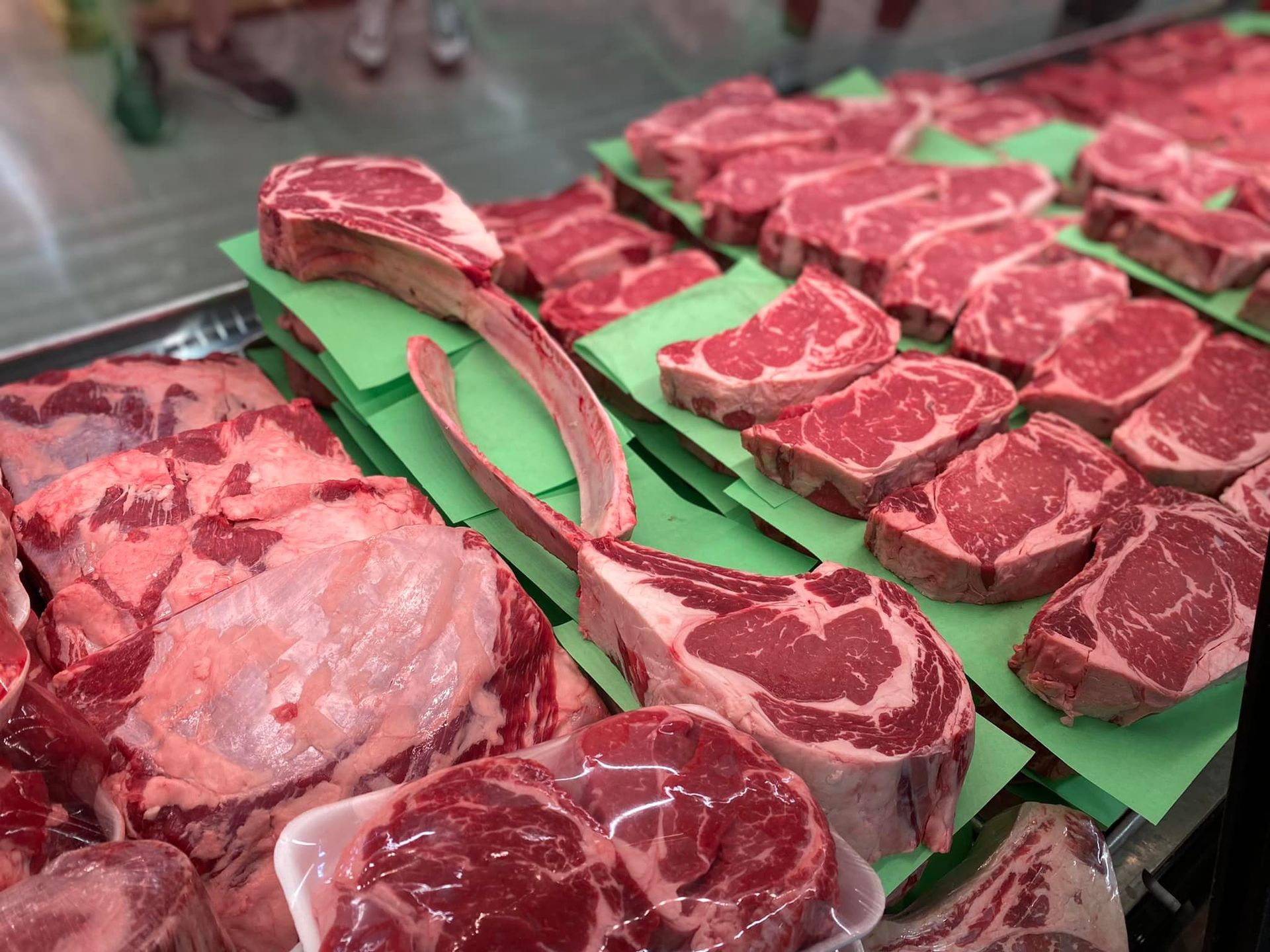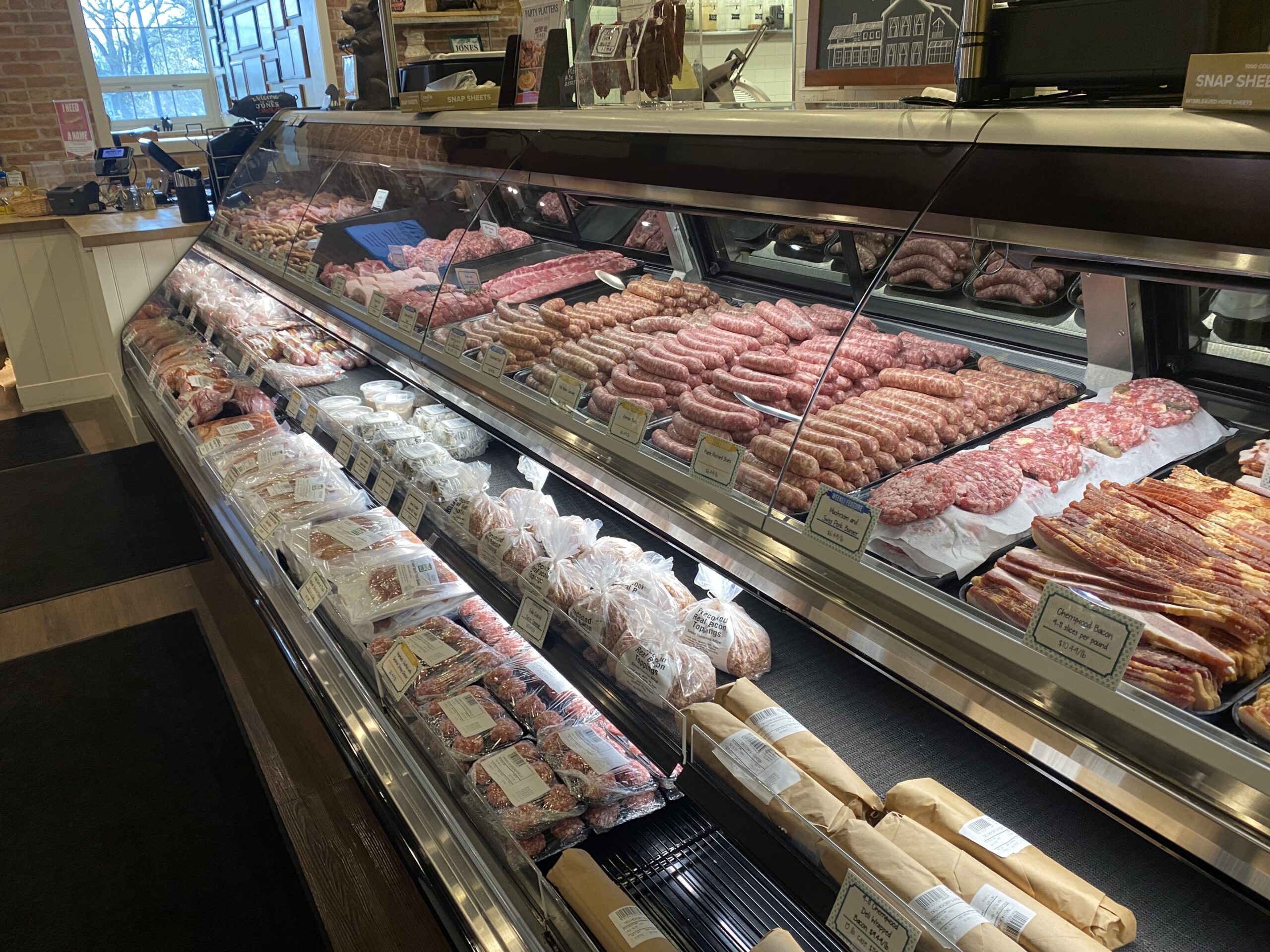Bagley Farms Meat Market Edwardsville IL: Your Best Destination for Neighborhood Meat Selection
Bagley Farms Meat Market Edwardsville IL: Your Best Destination for Neighborhood Meat Selection
Blog Article
Uncover the Art of the Butcher's Cut in a Modern Meat Market
In the ever-evolving landscape of modern-day meat markets, the butcher's cut has transcended its traditional origins, combining old-time craftsmanship with modern techniques. bagley farms meat market edwardsville il. Today's butchers are not just cpus of meat; they are experienced artisans that stress sustainability and honest sourcing. Their competence in choose and preparing cuts customized to details cooking demands provides an unparalleled dining experience. What truly sets the modern-day butcher apart is their ability to build a deeper connection in between consumers and the beginnings of their meat. Just how do these masters balance practice with development, and what implications does this have for the future of meat intake?
Evolution of Butchery Methods

The mid-20th century saw butchery methods even more improved by clinical insights into muscle mass biology and meat aging, boosting both inflammation and preference. Innovations like vacuum packaging and refrigeration extended item shelf-life, enabling butchers to diversify offerings and improve high quality control. This duration likewise marked the increase of specific devices, such as band saws and meat slicers, which raised accuracy and efficiency in meat handling.
Digital systems currently aid in tracking animal provenance and maximizing cuts to meet specific consumer preferences. In addition, a renewal in artisanal butchery has actually arised, mixing standard skills with modern understanding to provide to consumers looking for honest and lasting meat alternatives.

Comprehending Meat Cuts

Recognizing the complexities of meat cuts is essential for both butchers and consumers seeking quality and value. For butchers, accurate cuts show ability and respect for the craft, guaranteeing very little waste and optimal yield.
The main categories of meat cuts consist of primitive, sub-primal, and retail cuts. Butchers after that break these down further into sub-primal cuts, prior to ultimately generating retail cuts offered to customers, like ribeye or tenderloin.
Understanding muscle composition is critical; muscular tissues made use of much more regularly by the animal tend to be harder and are best matched for slow cooking techniques, while less-used muscle mass, like those found in the loin, are much more tender and suitable for cooking or roasting. Familiarity with these distinctions empowers consumers to make enlightened choices, improving their culinary ventures.
Selecting Quality Meat
Choosing the right meat involves more than just picking a visually enticing item from the screen. The art of choosing high quality meat requires a discerning eye and expertise of details features that indicate quality and excellence. Pay focus to the color; beef should have a bright, cherry-red color, while lamb must exhibit a soft pink tone, and pork a light pink. This shows the meat is fresh and hasn't been revealed to oxygen for as well long.
Second of all, think about the marbling, which describes the white flecks of fat within the muscle. Appropriate marbling is a key indication of tenderness and taste, as it melts throughout cooking, boosting the meat's juiciness. Remember, greater marbling frequently associates with premium top quality cuts, such imp source as USDA Prime.
Texture is another critical aspect; meat should feel strong to the touch, not slimy or excessively soft. In addition, bear in mind the aroma. Fresh meat needs to have a clean, neutral odor, without any type of sour or repulsive odors.
Combining Cuts With Food Preparation Methods
Effectively combining cuts of meat with the proper food preparation approaches is essential for achieving optimal flavor and texture. These methods enhance the meat's natural flavors and ensure a juicy finish.
Conversely, tougher cuts like brisket and chuck roast are abundant in collagen, which damages down right into gelatin when cooked slowly. These cuts are suitable for braising or slow roasting, enabling the meat to soften in time and create deep, complex tastes. In a similar way, cuts such as brief ribs and pork shoulder get on well with slow-cooking techniques, where prolonged cooking times transform their durable appearances right into succulent recipes.
Lamb shanks and oxtail, which need prolonged food preparation to soften, are ideal candidates for cooking or sluggish simmering. These methods coax out abundant, passionate flavors while maintaining dampness. By comprehending the distinct characteristics of each pop over here cut, cooks and home cooks alike can elevate their cooking developments, ensuring each dish is both pleasing and unforgettable.
The Butcher's Role Today
Browsing the developing landscape of the modern-day meat market, the butcher's function today extends past mere prep work of cuts. Contemporary butchers are culinary craftsmens, teachers, and advocates for lasting practices. They link the gap in between the farm and the fork by making sure honest sourcing, understanding animal husbandry, and focusing on transparency in the supply chain. This change reflects the expanding customer demand for top quality over quantity, where provenance and pet welfare are vital.
Along with crafting exact cuts, butchers currently involve directly with clients, providing cooking guidance and customizing selections to match individual requirements and choices. Their competence in meat aging, marbling, and taste accounts encourages consumers to make enlightened choices, boosting their culinary experiences. This personalized service exemplifies the butcher's evolving role as a trusted advisor in the cooking area.
Moreover, butchers are critical in lessening waste, using whole animals to create diverse products such as sausages and stocks - bagley farms meat market edwardsville il. This detailed technique not just values the pet see this page yet also aligns with contemporary sustainability goals. By doing this, the contemporary butcher symbolizes both custom and advancement, adjusting to an ever-changing market while protecting the creativity and stability of their craft

Conclusion
Proficiency in comprehending varied meat cuts and top quality indicators equips butchers to give informed suggestions, straightening particular cuts with optimum food preparation methods. By recognizing historic techniques while embracing contemporary demands, the butcher's duty continues to be vital in today's innovative meat market.
Report this page